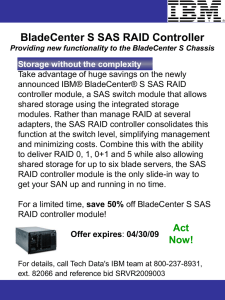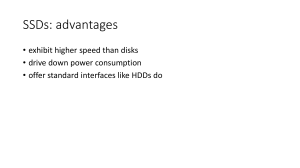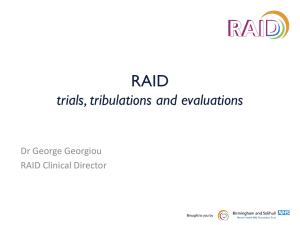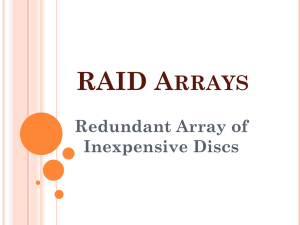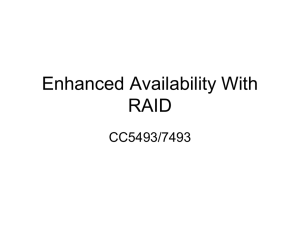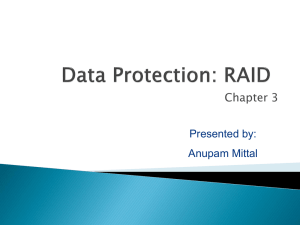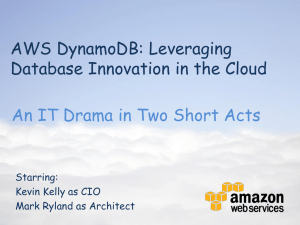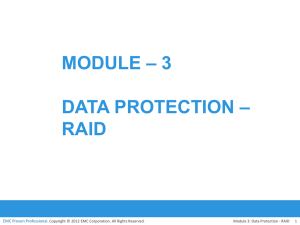ppt
advertisement
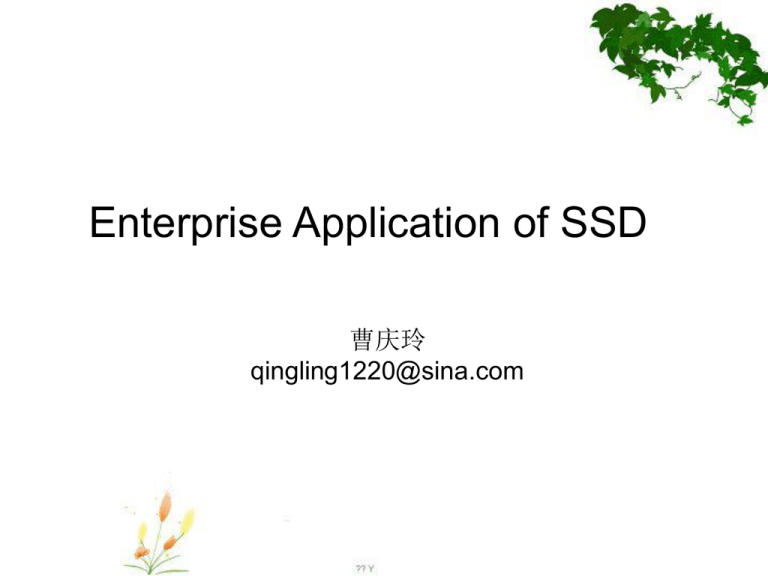
Enterprise Application of SSD 曹庆玲 qingling1220@sina.com • Towards SSD-Ready Enterprise Platforms • Building Large Storage Based On Flash Disks • Towards SSD-Ready Enterprise Platforms • Building Large Storage Based On Flash Disks Outline • Motivation • Platform and methodology • Platform bottleneck analysis Platform latency bottlenecks I/O processing bottlenecks Performance scaling bottlenecks • Conclusion Motivation • SSD deliver 2-3 orders of magnitude increase in IOPS over HDD • Platform have long been optimized for HDD • Is it ready for SSD? Platform and methodology Platform and methodology Platform and methodology • Use Linux* as a reference OS for experiment • Focus on fixed-size 4KB random reads . Random read to avoid I/O merging policies and if the platform ready for read , then it must be ready for write. Platform bottleneck analysis • • • Platform latency bottlenecks—determine component dominates I/O latency I/O processing bottlenecks—determine software contribute the most CPU overhead for I/O processing Performance scaling bottlenecks—determine component limits scaling of performance Platform bottleneck analysis —Platform latency Total I/O latency is the time from application issue an I/O to the time it receives completion. Time due to media Time due to platform Platform bottleneck analysis —Platform latency The platform only contribute 26% of the total latency. Optimizing the media is necessary. Platform bottleneck analysis —I/O processing cost 35000 Platform bottleneck analysis —I/O processing cost • ahci_interrupt() and ahci_scr_read() executed uncacheable (UC) reads. The UC reads incurred averaging 2,100 clocks per UC read. Device interfaces that adopt message signaled interrupts (MSI),and the added intelligence to push status to drivers , can eliminate such UC reads. Can reduce overhead about 8,400 clocks/IO. Platform bottleneck analysis —I/O processing cost • I/O processing when done through an MSI-based interface like LSI’s, incurred 25,000 clocks/IO Platform bottleneck analysis —I/O processing cost • The LSI’s driver return path (5250 clocks/IO) is still substantial. It can be reduced by employing interrupt coalescing. Then only 650 clocks remain in the driver return path, resulting in about 20,000 clocks/IO. Platform bottleneck analysis —Performance scaling Ensure that I/O processing scales with cores and SSDs. The single core with 3 SSDs is fully saturated,more cores are required. Platform bottleneck analysis —Performance scaling One adapter enable 177K IOPS. With more throughput scaled up to 445K IOPS. Conclusion • • • • Existing platforms to be ready for SSDs. Scalability of file system I/O behavior of real application Implementation of RAID • Towards SSD-Ready Enterprise Platforms • Building Large Storage Based On Flash Disks Outline • • • • • Introduction SSD RAID configuration Scalability Solution alternatives Conclusion RAID0 Input data stream Input data RAID controller parallel SSD1 SSD2 SSD3 SSD4 SSD5 RAID1 Input data stream RAID controller Parallel Work disk Mirror disk SSD1 SSD2 Group 1 SSD3 SSD4 Group 2 RAID Levels — RAID 10 Two RAID 1’s Striped RAID5 Input data stream Input data RAID controller parity parity parity parity Introduction SSD RAID shows the performance loss. Test setup and workload Test setup: • 16 core server with 64GB RAM • 3 RAID controllers with 512MB cache • Intel 64GB SSD Workloads: • Workload light – one worker,32 queue; • Workload heavy – ten worker,queue depth 16; • Workload latency – single request,one worker, queue depth 1. SSD RAID Configurations —throughput(workload heavy) RAID 0,5,10 With 8 SSDs on a single controller SSD RAID Configurations —throughput(workload heavy) RAID 0,5,10 With 8 SSDs on a single controller SSD RAID Configurations —throughput(workload light) Volume=240GB Show single SSD data for comparison SSD RAID Configurations —throughput(workload light) Volume=240GB Show single SSD data for comparison saturate Scalability Experiment data above indicate: Exist a bottleneck along the IO chain Is it RAID controller or PCIe bus? Scalability With the best throughput,the utilization PCIe bus is less than 50%. RAID controller is the bottleneck. Scalability Two SSDs are enough to saturate the controller! Scalability With read-ahead With write cache Scalability Without write cache Solution alternatives Combination of hardware and software. A. Without controller. Devices connect directly with software RAID on top B. Use controller just as simple device aggregator while running software RAID on top C. Use simple RAID level on multiple RAID controller while running software on top Solution alternatives Compare option A and B RAID with 2 SSDs Solution alternatives Compare option B and C Second controller have a profound effect on performance. conclusions • Software RAID-approaches • Multiple blocksize • RAID controllers are not designed for the characteristic of SSD Thank you~
